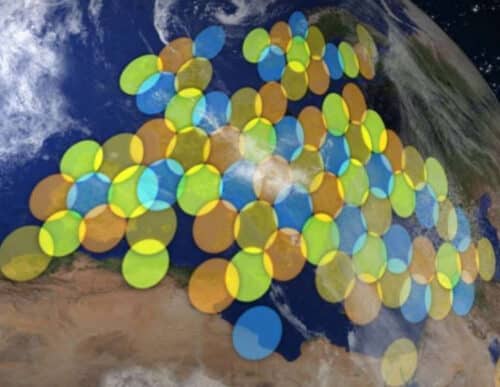HTS Satellites are communication satellites with particularly high data throughput. By employing powerful and focused spot beams instead of wide beams, HTS satellites achieve a 10 to 100 times higher throughput (up to 100 Gbit/s) compared to conventional satellites.
The High throughput satellite supports a wide range of customers who have varying use case requirements as well as their actual deployment locations place.
For example:








